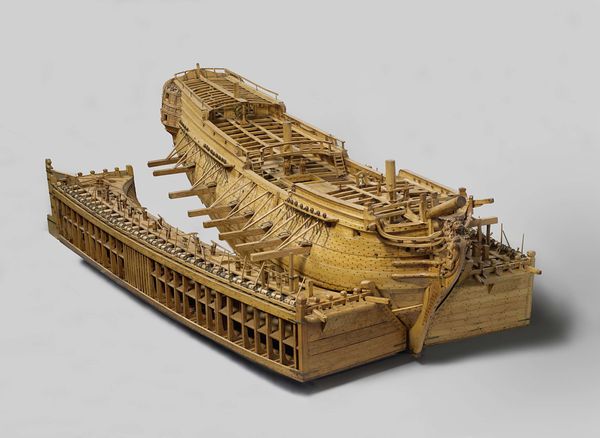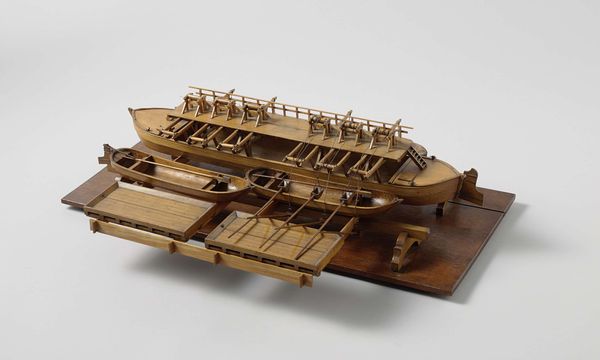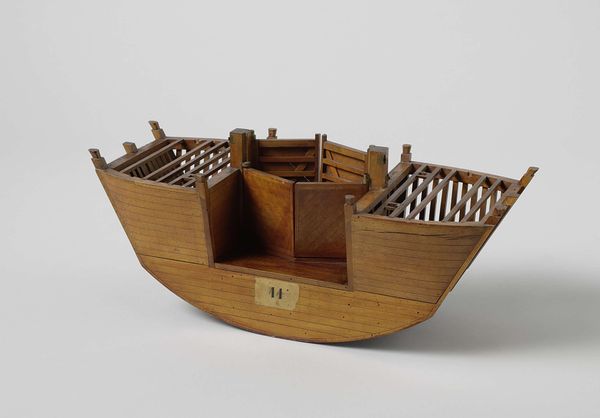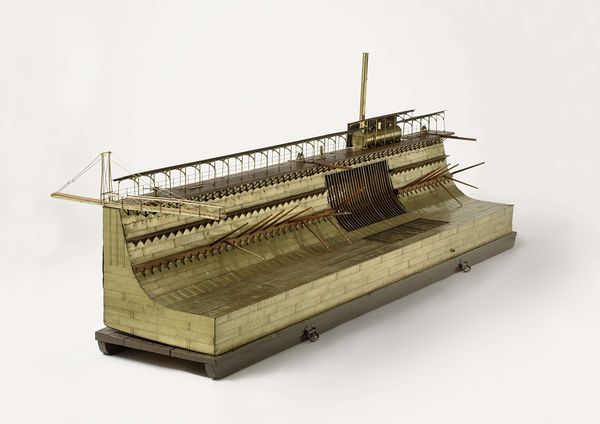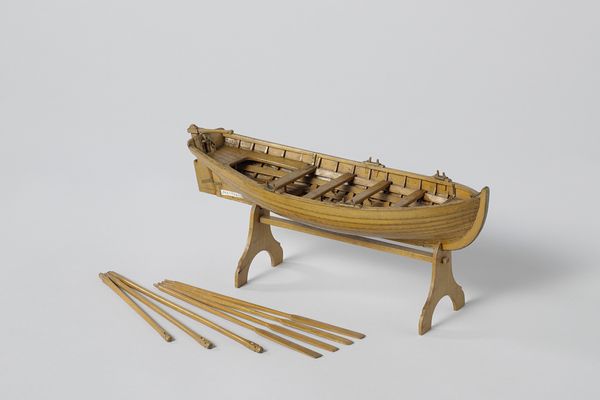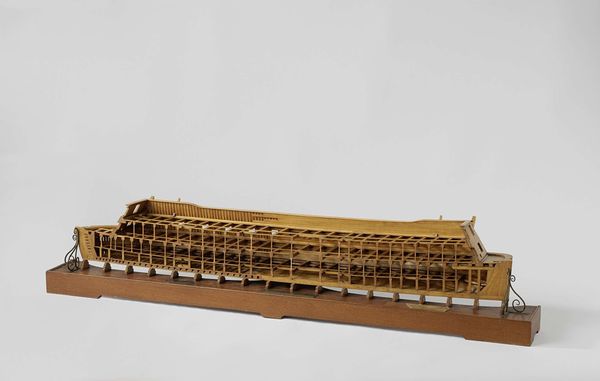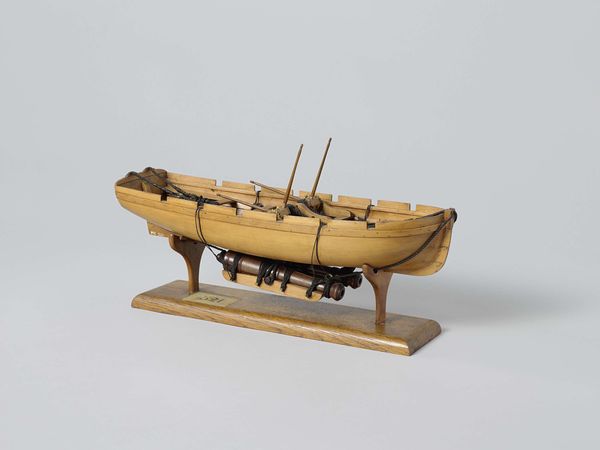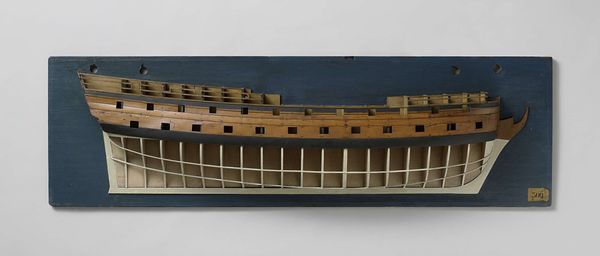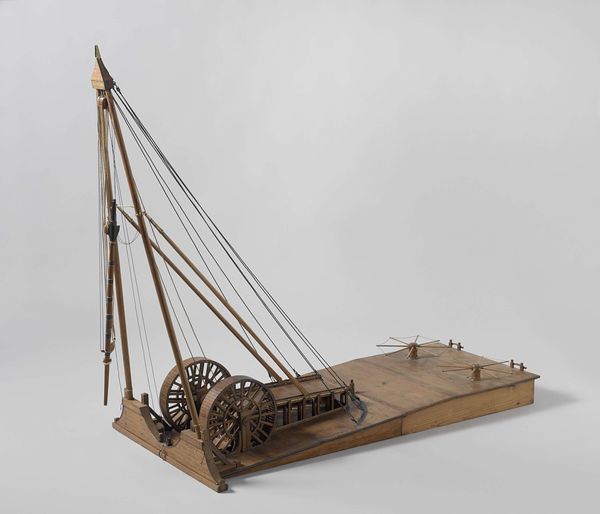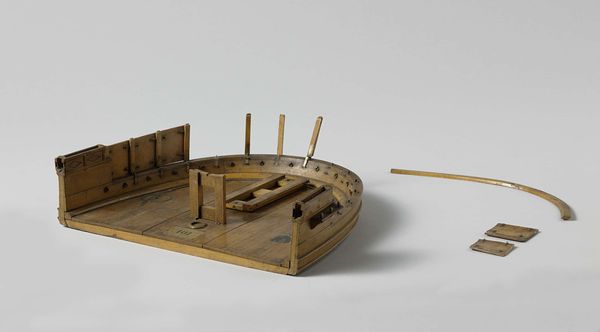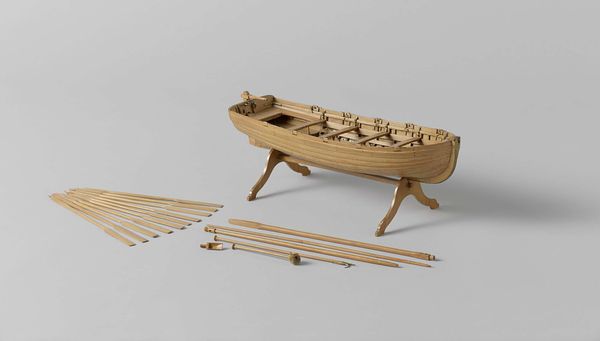
sculpture, wood
#
architectural and planning render
#
architectural modelling rendering
#
architectural diagram
#
architectural plan
#
geometric
#
sculpture
#
architect
#
architectural render
#
architecture model
#
architectural section drawing
#
wood
#
architectural proposal
#
architecture render
Dimensions: model height 24.5 cm, model width 76.9 cm, model depth 23.4 cm, packaging capsule height 29.5 cm, packaging capsule width 28.5 cm, packaging capsule depth 805 cm
Copyright: Rijks Museum: Open Domain
Curator: It has such a skeletal presence, like an exposed ribcage or perhaps a Venetian blind that could transform into a ship. Editor: Exactly, it's the Model of a Ship Camel created circa 1840. What’s fascinating is that it came from the Rijkswerf Rotterdam, the state shipyard, in the Netherlands. Curator: So, a physical manifestation of a carefully conceptualized mechanical idea. How was it produced, what materials? Editor: The ship camel model is sculpted from wood. These models were instrumental as design tools, allowing naval architects to visualize and refine ship designs before committing to the full-scale construction. There is definitely a utilitarian appeal, while still possessing an intrinsic artistry. Curator: Indeed, that's what strikes me. It’s both a functional object representing technological innovation and a captivating symbolic structure. Think of the ship as a vessel traversing oceans, loaded with hopes, desires, and, of course, colonialism and capitalism... what of it, today? Editor: It's impossible to separate such a design from its historical context. Ships of this era facilitated global trade and exploration but also participated in exploitative colonial practices. Looking at this, I can’t help but reflect on maritime legacies, exploitation, and the power dynamics at play during that period. The detail serves as a reminder that progress is often entwined with difficult histories. Curator: Absolutely. It embodies the duality of human innovation. Its presence calls us to confront how advancement often comes at the cost of human rights. The geometry provides a structured framework of how humans traverse and occupy spaces of the sea and land. But ultimately it evokes introspection about both power and ethics and allows us to understand technological prowess beyond utility. Editor: That intersection is so important. Hopefully, the work encourages consideration beyond mere technological advancement and how we can learn from past actions. Curator: Precisely! This contemplation makes the ship more than a design, making it a tangible cultural archive that bears messages from the past.
Comments
No comments
Be the first to comment and join the conversation on the ultimate creative platform.
